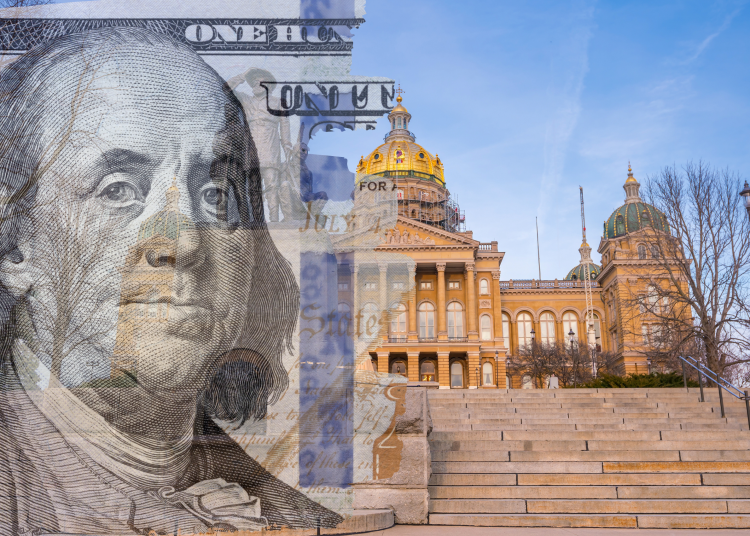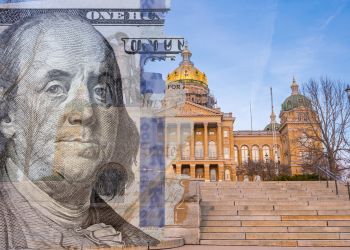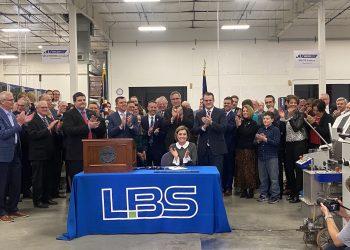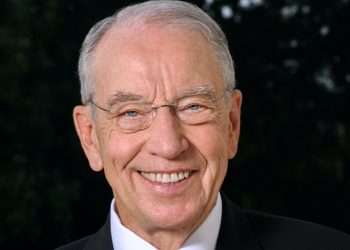While some proposals want to fund more spending, a bill has been introduced in the Senate to utilize the Taxpayer Relief Fund to phase-out the income tax altogether.
“Keep your eye on one thing and one thing only: how much government is spending, because that’s the true tax,” the late economist Milton Friedman once stated. Paying out public dollars is the heart of high taxation, regardless of the tax. This lesson has taken hold in Iowa, where pro-growth tax reforms and conservative budgeting by Governor Kim Reynolds and the legislature have resulted in multiyear budget surpluses as well as a growing balance in the Taxpayer Relief Fund. That fund represents excess tax dollars collected by the government, but not spent.
The Taxpayer Relief Fund originated in 2011 as the Taxpayer Trust Fund, which the legislature enacted to capture excess revenue for income tax relief. Lawmakers at the time believed it to be the best way to ensure surplus tax collections ended up back in the pockets of taxpayers, not used for more state-level spending. With the fund originally capped at $60 million, Iowans received credits on their state tax returns each year there was a balance.
A 2018 tax reform law renamed the Taxpayer Trust Fund as the Taxpayer Relief Fund and removed the $60 million cap. Additionally, taxpayers no longer received an automatic return of the excess revenue; rather, the legislature is now tasked with returning those dollars through tax relief measures of its choosing.
Tax dollars only flow into the Taxpayer Relief Fund after the state’s Cash Reserve Fund and Economic Emergency Fund (Iowa’s “Rainy Day Funds”) are both filled to their statutory requirements. Notably, both have achieved that level, holding a combined $895 million, which is projected to increase to $962 million by fiscal year 2024.
Despite these prior requirements, the Taxpayer Relief Fund has grown from $1.6 billion in fiscal year 2022 to $2.7 billion in fiscal year 2023. Projections for fiscal year 2024 show the Taxpayer Relief Fund will increase to $3.4 billion by that time.
The fund continues to increase thanks to Iowa’s strong economy and the fact state government is still collecting too much money from taxpayers, even in spite of multiple rounds of tax cuts being phased in. A 2022 tax reform law is the biggest step yet in correcting this excess through a flat 3.9 percent income tax rate implemented by 2026.
The enormous balance in the Taxpayer Relief Fund should remind policymakers of its original intent: to provide Iowans with income tax relief. Senator Dan Dawson, who Chairs the Ways and Means Committee, is working to ensure the Taxpayer Relief Fund is used for its intended purpose. Doing so requires not only further income tax relief, but also safeguarding the fund.
To meet both objectives, Senator Dawson has introduced a bill that, if enacted, would accelerate the rate reductions from the 2022 tax reform law. The legislation would lower the individual income tax to a flat 4 percent in 2025 and 3.9 percent in 2026. By 2027, the rate would fall to 2.95 percent, and by 2028, it would reach 2.5 percent. Once the 2.5 percent flat rate is implemented, the individual income tax would phase down until it is completely eliminated. Senator Dawson’s plan does this by utilizing money in the Taxpayer Relief Fund, renaming it, again, as the Individual Income Tax Elimination Fund.
Such large balances in the Taxpayer Relief Fund also bring competing temptations for additional government spending. Indeed, some legislators recently offered an amendment to a property tax bill that would have used the Taxpayer Relief Fund to provide backfill payments to cities and counties. Another bill introduced last month proposed a similar use of Taxpayer Relief Fund dollars by creating local government supplement payments.
The desire to grow city, county, and state budgets, whether under the guise of “buying down” property taxes or simply adding spending within the state General Fund, will remain constant. Taxpayer Relief Fund money belongs to the taxpayer and must be used for further income tax relief and not additional spending.
















